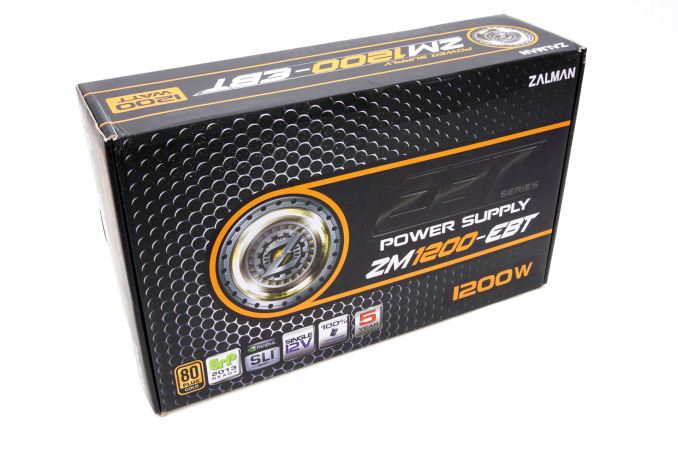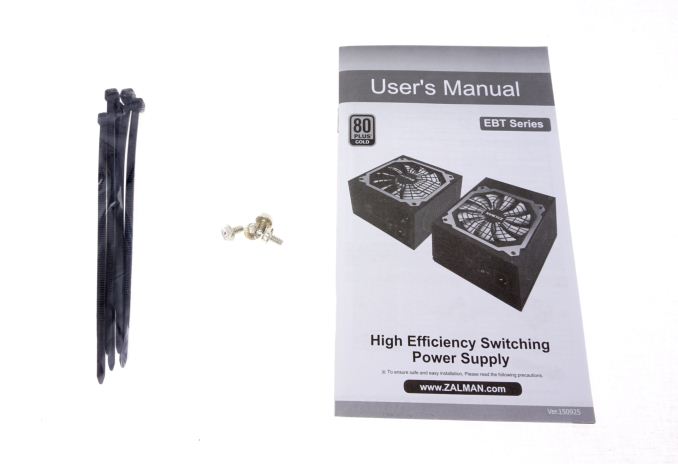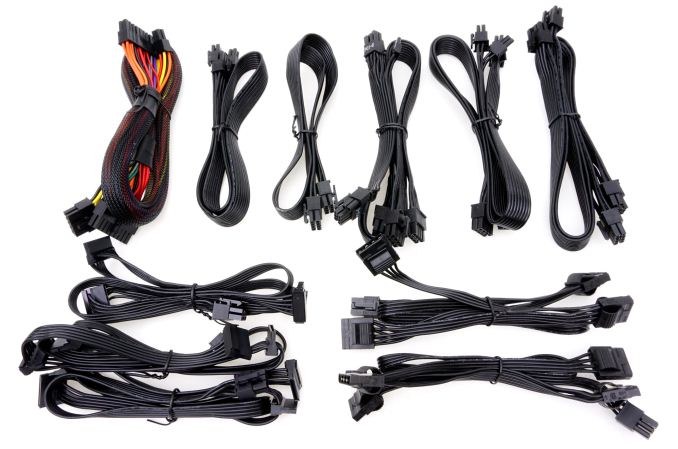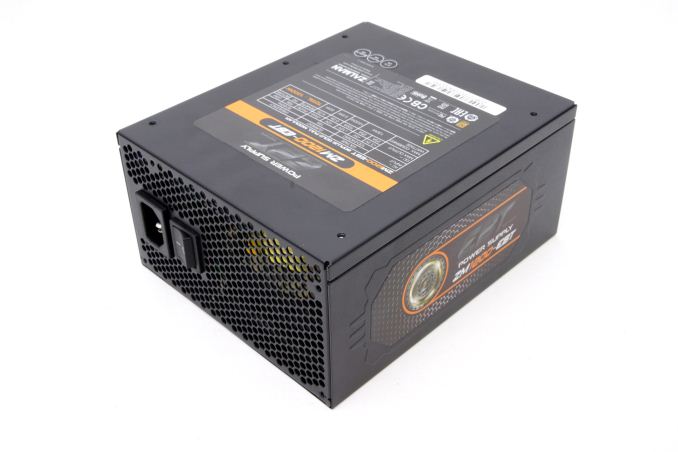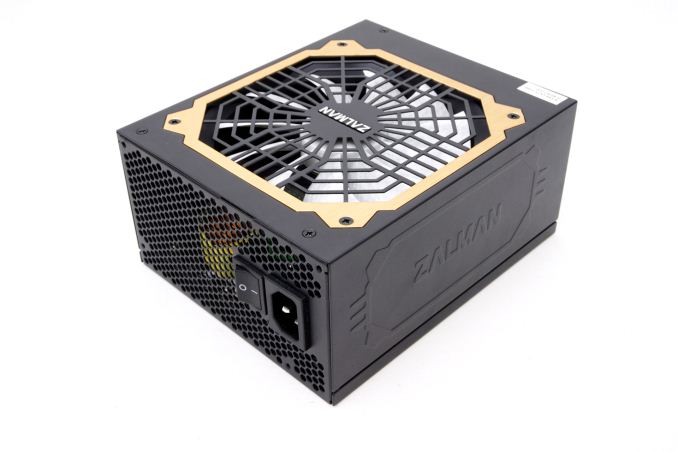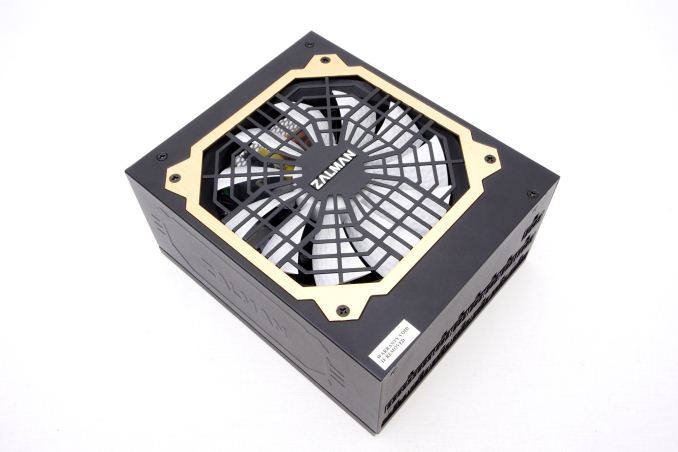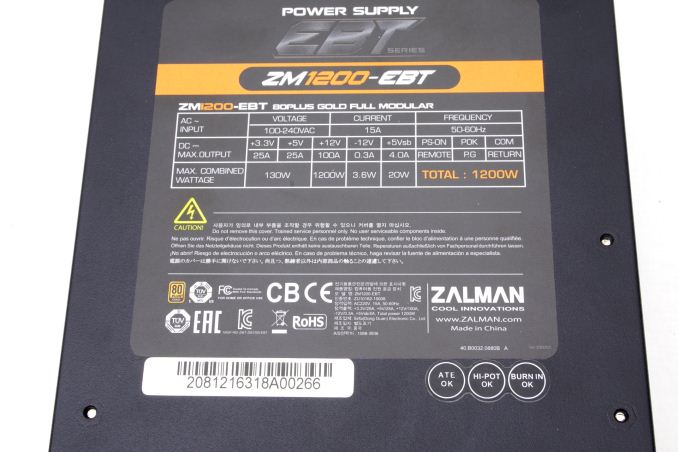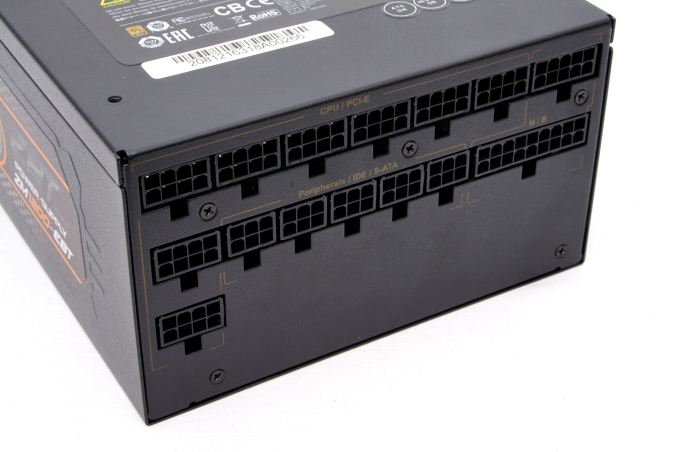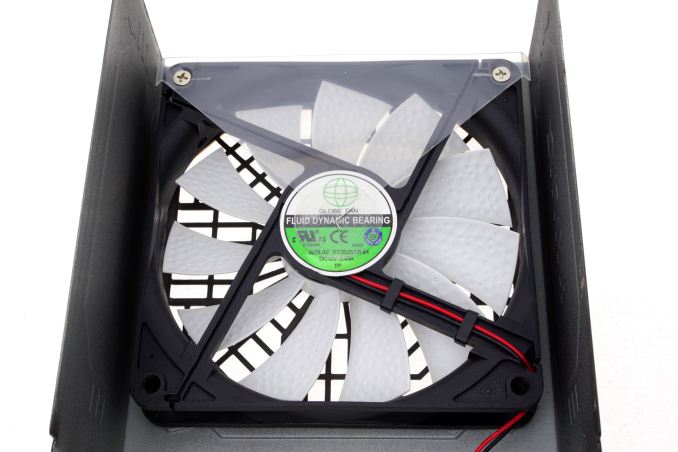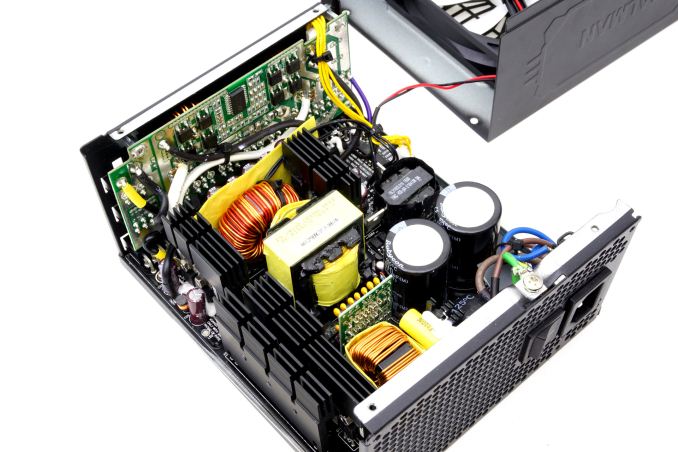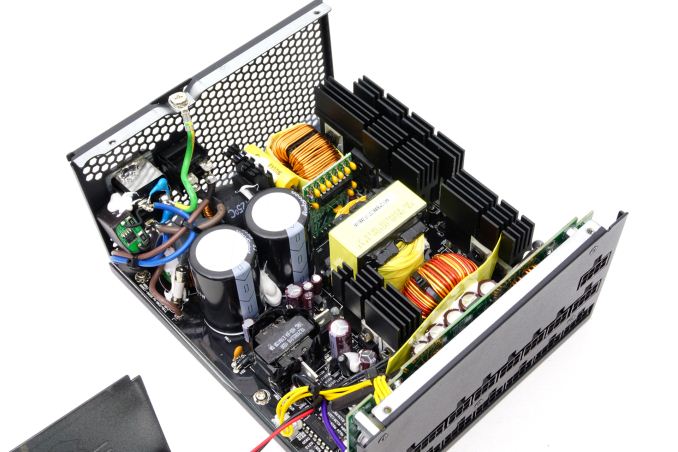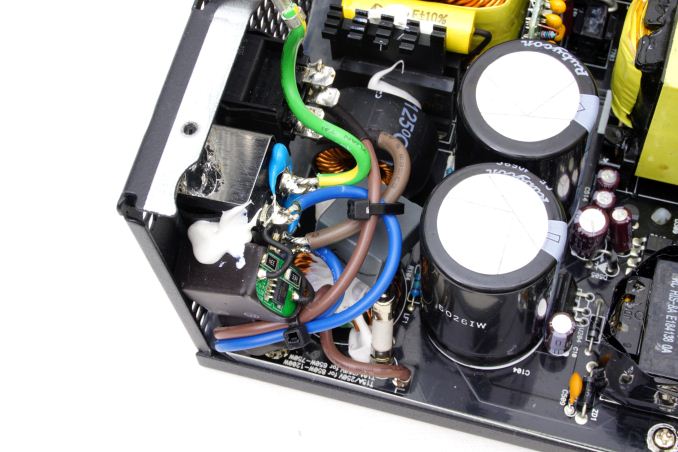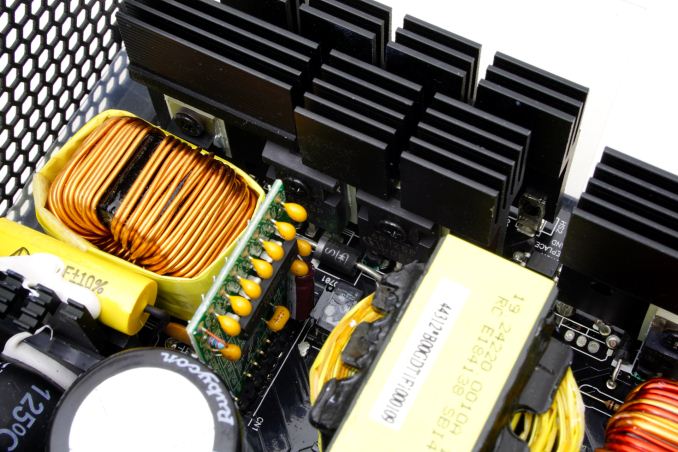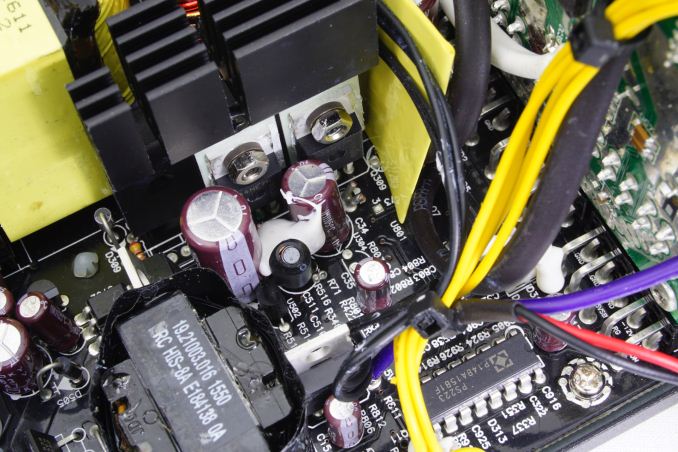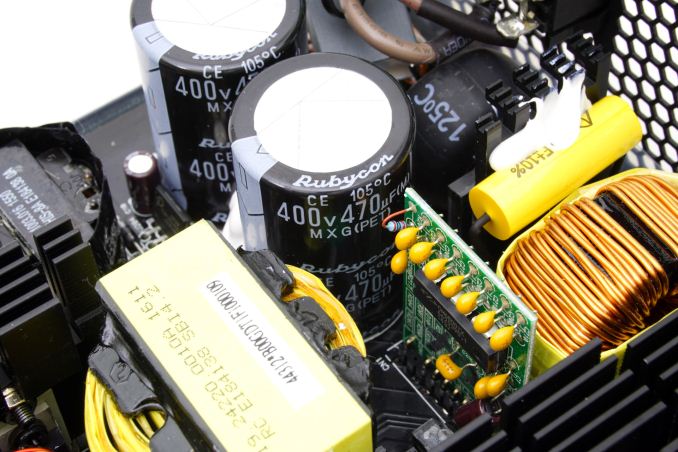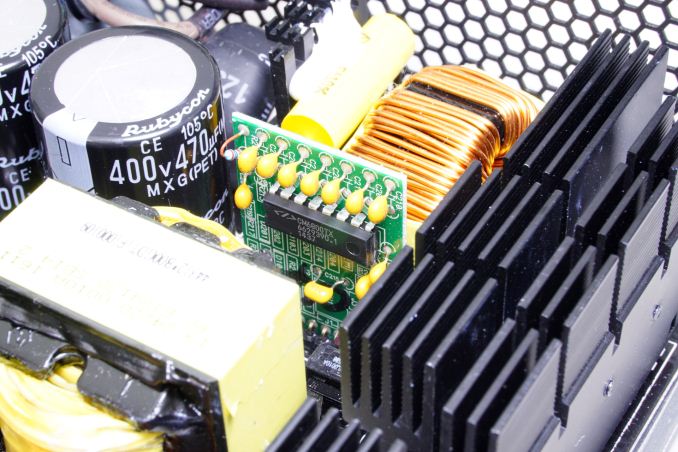
Original Link: https://www.anandtech.com/show/10820/the-zalman-zm1200-ebt-1200w-psu-review
The Zalman ZM1200-EBT 1200W Power Supply Review
by E. Fylladitakis on November 10, 2016 8:00 AM EST- Posted in
- PSUs
- 1200W
- Cases/Cooling/PSUs
- Zalman
- Modular
- ZM1200-EPT
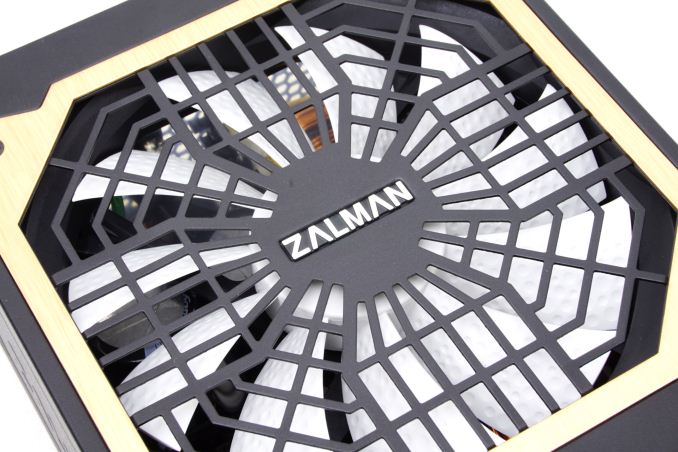
Zalman may be a company that became famous from their innovative cooling solutions, yet they have since diversified into several segments of the market. Today the company offers a wide variety of products, from PC cases and gaming peripherals to audio devices and docking stations.
Introduction
One of Zalman's first diversification attempts was the release of high performance PSUs, with the company aiming to take advantage of their expertise on cooling in their top-tier products. The company had a very good reputation as a power supply maker, but they essentially froze the release of new products due to parent company Moneaul's scandal in 2014. Zalman legally severed their ties with Moneaul and, despite that setback, is moving on as an independent company.
In this review we are having a look at the most powerful model of their latest PSU series, the ZM1200-EBT. Zalman introduced the EBT series last year but started with units ranging from 650W to 1000W. The latest addition to the series bumps the continuous maximum output to 1200 Watts rated to an ambient temperature of 50 °C, all with an 80Plus Gold certification and a fully modular design.
| Power specifications ( Rated @ 50 °C ) | |||||
| AC INPUT | 100 - 240 VAC, 50 - 60 Hz | ||||
| RAIL | +3.3V | +5V | +12V | +5Vsb | -12V |
| MAX OUTPUT | 25A | 25A | 100A | 4A | 0.3A |
| 130W | 1200W | 20W | 3.6W | ||
| TOTAL | 1200W | ||||
Packaging and Bundle
Zalman supplies the ZM1200-EBT in a large and sturdy cardboard box, more than capable of providing enough protection during shipping. Inside the box, we found the PSU well-packed and protected between thick polyethylene foam pieces.
The company kept the supplied bundle down to the basics. Inside the box we only found four typical mounting screws, a manual, an AC power cable and a few cable ties.
| Zalman ZM1200-EBT | ||
| Connector type | Hardwired | Modular |
| ATX 24 Pin | - | 1 |
| EPS 4+4 Pin | - | 1 |
| EPS 8 Pin | - | 1 |
| PCI-E 6+2 Pin | - | 8 |
| PCI-E 8 Pin | - | - |
| SATA | - | 12 |
| Molex | - | 8 |
| Floppy | - | 1 |
The ZM1200-EBT is a fully modular design, meaning that every cable is detachable, including the main ATX 24-pin one. With the exception of the 24-pin cable, the rest of the cables are "flat" type ribbon cables, with black wires and connectors. The 24-pin cable is made from typical colored wires, black connectors and is wrapped in black nylon sleeving.
External Appearance
Aesthetically, the ZM1200-EBT has been designed to visually stand out inside a case. It is not extravagant, ( as in it lacks lighting and does not require chassis modifications) but has decorations based on complex geometric patterns and bright colors that cannot be hidden away. The PSU is 180 mm long, requiring a spacious PSU compartment in order to be installed without issues.
Most of the chassis has been sprayed with a smooth matte black paint, with the exception of the golden metallic frame surrounding the fan's finger guard. The fan's finger guard is a peculiar octagonal design that partially resembles a spider's web.
Zalman placed the sticker with the electrical specifications and certifications of the PSU on the top side of the chassis, making it directly visible from a windowed side panel if the PSU is installed at the bottom of a case without a shroud/cover. A decorative sticker can be found on the left side of the PSU, inside an abstract geometric design embossed on the metallic chassis. The same design is embossed on the right side of the PSU as well, but there is no sticker, only Zalman's logo embossed on the metal as well.
Only an AC cable receptacle and a large on/off switch can be seen at the rear side of the ZM1200-EBT. Expectedly, the front side of the PSU is flooded with the connectors for the numerous modular cables. The 8-pin PCI Express and CPU EPS power connectors are shared, covering most of the top row and the left column of the connector's array. There are five connectors for Molex and SATA cables, as well as two connectors for the main 24-pin ATX cable.
Internal Design
The 135 mm fan is supplied by Globe, a popular power supply fan manufacturer. It has white blades with a golf ball like dimpled pattern embedded on them, which is supposed to improve the overall performance of the fan. The S1352512HH is a powerful model, featuring a FDB (fluid dynamic bearing) engine and has a maximum speed of 1800 RPM.
Zalman entrusted the creation of the ZM1200-EBT to Sirfa, a popular OEM when it comes to units combining performance and competitive pricing. It is based on Sirfa's HPJ platform, the same platform that the 850W and 1000W units of the series have been using for some time now.
The filtering stage begins on the back of the AC receptacle and continues onto the main PCB of the PSU, with a total of four Y capacitors, two X capacitors, two filtering inductors and one surge-suppressing MOV. There is also a simple glass fuse for protection. The two input conversion bridges that can be seen sharing a small heatsink right before massive APFC inductor. Two Rubycon 400V/470μF capacitors are being used in the PFC stage. The active PFC components on the heatsinks comprise of three transistors and two diodes.
Two power transistors form the half-bridge inversion stage. There are high quality products that are usually reserved for very high efficiency units only (Infineon 6R125P, RDS(on)= 0.125 Ω). The secondary stage consists of eight transistors in total, split into two groups of four. Each group of four transistors can be seen on its own heatsink on either side of a large filtering inductor. Each of these transistors is rated for a maximum output of 100A - eight of them are a monstrous oversizing. All of the secondary side capacitors are supplied by Nippon Chemi-Con.
The one issue that this design has is the lack of inrush current dampeners. With its huge APFC capacitance, this PSU momentarily draws an excessive level of current when the capacitors have been discharged (e.g. when new or after a power grid failure). Although this current is momentary and, theoretically, it should pose no threat to the electrical installation, it can easily trip the small and/or sensitive circuit breakers that are usually found in residential installations. It did trip the 20A circuit breaker at our lab when it was first switched on, on a 230V AC grid (on 110V grids, the current will effectively double in order to supply the same energy to the capacitors). This should not be a problem with installations where the presence of high power equipment has been carefully considered, but it can be an annoyance for many home users.
Cold Test Results
For the testing of PSUs, we are using high precision electronic loads with a maximum power draw of 2700 Watts, a Rigol DS5042M 40 MHz oscilloscope, an Extech 380803 power analyzer, two high precision UNI-T UT-325 digital thermometers, an Extech HD600 SPL meter, a self-designed hotbox and various other bits and parts. For a thorough explanation of our testing methodology and more details on our equipment, please refer to our How We Test PSUs - 2014 Pipeline post.
The energy conversion efficiency of the ZM1200-EBT in room temperature and for an input voltage of 230VAC does meet the expected 80Plus Gold standards, even if only barely. Our instruments recorded an efficiency of 90.1%, 92.4% and 90.1% at 20%, 50% and 100% load respectively, with the 80Plus directive requiring 90%/92%/90% for an 80Plus Gold certification with an input voltage of 230VAC. The average efficiency is 91.2% within the nominal load range (20% to 100% of the unit's capacity), a fair figure for an 80Plus Gold certified unit. The low load efficiency of the ZM1200-EBT is mediocre, dropping down to just 75.4% with the unit operating at 5% capacity.
Sirfa's design does keep the fan running after the PSU has been shut down, but it has no "semi-fanless" mode for when the PSU is operating, meaning that the fan starts as soon as the PSU has been turned on. In room temperature, the speed of the fan increases almost linearly with the load, reaching clearly audible levels with a load of about 600 Watts and a maximum of 42.5 dB(A) at full capacity.
Hot Test Results
As seen below, the Zalman ZM1200-EBT provides acceptable power quality for a high quality PSU. The voltage regulation is excellent, with the 12V line maintaining its potential output within 1.8% across the nominal load range. The 3.3V/5V lines are even better regulated, maintaining their voltage potential within just 1.1%.
| Main Output | ||||||||
| Load (Watts) | 243.71 W | 606.35 W | 900.25 W | 1198.17 W | ||||
| Load (Percent) | 20.31% | 50.53% | 75.02% | 99.85% | ||||
| Amperes | Volts | Amperes | Volts | Amperes | Volts | Amperes | Volts | |
| 3.3 V | 2.3 | 3.34 | 5.75 | 3.33 | 8.63 | 3.32 | 11.51 | 3.31 |
| 5 V | 2.3 | 5.05 | 5.75 | 5.04 | 8.63 | 5.01 | 11.51 | 4.99 |
| 12 V | 18.41 | 12.19 | 46.02 | 12.13 | 69.03 | 12 | 92.04 | 11.98 |
However, we did not find the filtering to be as good, with a maximum ripple of 74 mV on the 12V line. The filtering is even worse on the better regulated minor lines, reaching a maximum of 42 mV on the 3.3V line with a suggested design limit of 50 mV. Although these figures are not extraordinary by today's standards, they are satisfactory for a modern 1200W PSU.
| Line | Regulation (20% to 100% load) |
Voltage Ripple (mV) | |||||
| 20% Load | 50% Load | 75% Load | 100% Load | CL1 12V |
CL2 3.3V + 5V |
||
| 3.3V | 1.1% | 20 | 26 | 34 | 42 | 24 | 46 |
| 5V | 1.25% | 16 | 24 | 30 | 36 | 28 | 44 |
| 12V | 1.8% | 20 | 38 | 50 | 74 | 80 | 50 |
Zalman rates the output of the ZM1200-EBT at 50 °C ambient and therefore it did not have a problem reaching its maximum power output inside our hotbox. There is however a significant impact on the energy conversion efficiency, with average nominal load (20-100%) efficiency dropping down to 90.5%. The efficiency drop seems to be slightly more significant at higher loads, hinting that the components are becoming thermally stressed under these conditions. The maximum efficiency drops down to 91.9% at 50% load and the minimum efficiency within the nominal load range is 89.3% at 100% load.
The acoustic profile of the ZM1200-EBT changes significantly once the PSU is found inside a very hot environment. The fan is silent only while the PSU is minimally loaded, with its speed increasing quickly alongside with the load in order to keep up with the high cooling demands of the unit. Once the load reaches 80% of the unit's capacity, the fan essentially operates at maximum speed, reaching painful noise output levels. However, despite the valiant efforts of the fan, the internal temperatures of the ZM1200-EBT are high for an 80Plus Gold certified unit, even for one with such a massive output, hinting that the heatsinks are just barely large enough to maintain reliable operation under such conditions.
Conclusion
Zalman released the new EBT PSU series in order to provide competitively priced, yet reliable power supplies with good overall performance for enthusiasts. The company tried to make it aesthetically pleasing, combining a fully modular design with a conspicuous chassis. Our experience with the most powerful unit of the series, the ZM1200-EBT, revealed that it perfectly fulfills its purpose. It is not a technological miracle and does not excel on virtually any performance aspect, but it does not fail anywhere either.
Electrically, the ZM1200-EBT delivers exactly as it should be. The voltage regulation is excellent, maintaining a very stable voltage output on all lines across the entirety of the load range. It is just as efficient as Zalman advertises it to be, meeting the 80Plus Gold certification levels. Only the filtering of the minor voltage lines is mediocre but the voltage ripple remained within the recommended limits, so the filtering was adequate, even if only barely.
The thermal performance of the ZM1200-EBT may be passable but, considering that this is a high performance model, leaves something to be desired. We found that the PSU thermally performs well and maintains reasonable acoustic levels in room temperature, but the thermal design is lacking for a PSU designed to deliver its maximum output with an ambient temperature of 50 °C. The Globe S1352512HH fan had to give everything in order to maintain normal operating temperatures, reaching painful noise levels, and it still was barely enough. The ZM1200-EBT should maintain reasonable noise output levels under normal operating conditions, but we would have liked to see a better thermal design.
The only potential issue with the ZM1200-EBT as a complete product is that it is not currently unavailable in any country using 110V AC, including the US. It can be easily found all across Europe, Russia, and many other regions that use 230V at the wall, but only those regions. This may be only temporary and ZM1200-EBT's may start appearing in the North American market soon, but we suspect it may be because of the very high inrush current of the platform that can reach catastrophic levels with a low voltage input. Even for consumers on 230V AC grids, the high inrush current can cause the unwanted and annoying tripping of circuit breakers if the capacitors of the PSU are discharged.
In summary, the ZM1200-EBT is a competitively priced, fully modular PSU with very good overall performance. We feel that it will be enticing for users that are looking to combine value with aesthetics. The company covers it with a five-year warranty, which is acceptable for a high performance PSU nowadays. However, hardcore enthusiasts and overclockers that demand exceptional electrical performance and are indifferent about the appearance of the PSU are likely to look elsewhere.

